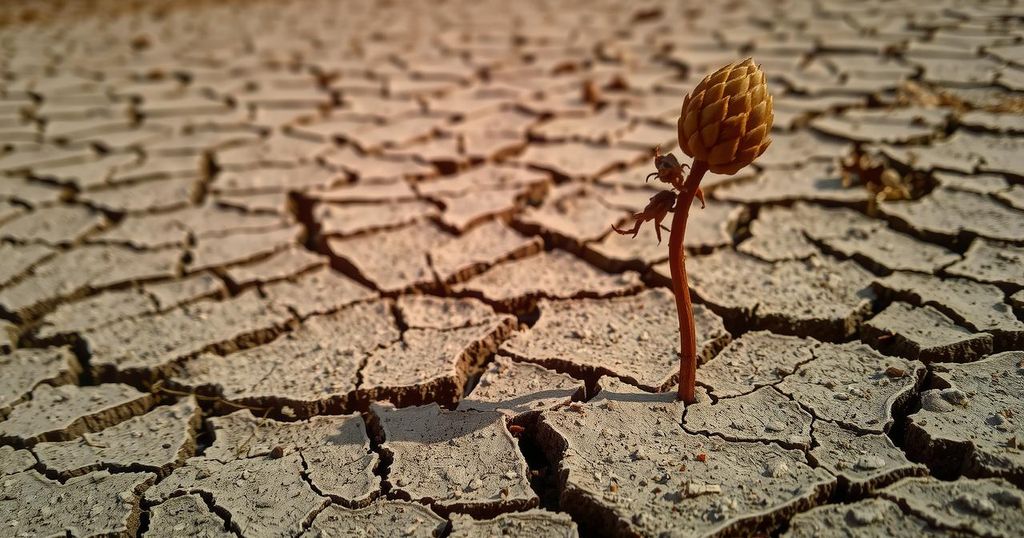A recent report reveals that only 20 percent of Kenya’s soil is suitable for food production, highlighting severe soil degradation. The Soil Atlas Health Report 2025 notes alarming losses due to erosion and salinity, alongside nutrient depletion affecting agricultural output. The situation poses significant risks of acute food insecurity, with millions vulnerable to malnutrition in the coming years.
A new report has highlighted a concerning situation regarding Kenya’s agricultural potential, revealing that only 20 percent of the country’s soil is fit for food production. The Soil Atlas Health Report 2025 indicates that the nation is facing severe soil degradation, losing an alarming 26 tons of soil per hectare annually due to water-induced erosion, with some regions suffering losses exceeding 90 tons per hectare.
The degradation of soil poses significant threats to food and nutritional security in Kenya. Moreover, soils play a crucial role in combating climate change, as they store more carbon than both vegetation and the atmosphere combined. Plants absorb atmospheric carbon through their roots, sequestering it in the soil, thus underscoring the importance of soil preservation.
The situation is dire, particularly in East Africa, where over 40 percent of soils are reported to be degraded. This degradation jeopardizes the agricultural foundations and resilience of the region. A combination of factors, including human activities and natural processes, is contributing to this crisis, particularly overgrazing, unsustainable farming practices, deforestation, and erratic weather patterns.
Overgrazing, especially in dry regions, exacerbates soil degradation by stripping away protective vegetation. The absence of this cover leaves the soil vulnerable to erosion and compaction, greatly diminishing its capacity to absorb water and sustain crops. Additionally, salinization, the accumulation of salts in the soil, poses another significant challenge, particularly in arid and semi-arid areas where poor irrigation practices lead to salt buildup.
The Soil Atlas Report notes that approximately 40 percent of irrigated land in Kenya is affected by salinity, which restricts agricultural productivity. Furthermore, nutrient depletion is a pressing issue, with over 85 percent of soils being nutrient-deficient. Continuous farming without adequate replenishment, coupled with rising soil acidity and poor management practices, has worsened these problems.
Alarmingly, the report estimates that degraded soils could reduce agricultural output by 30 percent, resulting in increased reliance on food imports. This situation is compounded by another report from the National Disaster Management Authority (NDMA), which indicates that an estimated 2.8 million people may face acute food insecurity between April and June 2026, primarily due to anticipated below-normal long rainfalls.
The NDMA assessment covering 23 Arid and Semi-Arid Lands (ASAL) counties revealed a significant rise, with an additional 650,000 individuals requiring urgent humanitarian assistance, raising the total from the previous figure of 2.15 million. Children between six months to six years old and breastfeeding women are particularly at high risk of experiencing acute malnutrition due to the deteriorating situation.
In conclusion, the Soil Atlas Health Report 2025 underscores the grave condition of Kenya’s soil, where only 20 percent is deemed suitable for farming. The nation faces severe challenges, including soil degradation caused by various human activities and natural factors, leading to reduced agricultural outputs and increased food insecurity. With millions at risk of acute malnutrition, immediate action is imperative to address these issues.
Original Source: www.kenyans.co.ke




